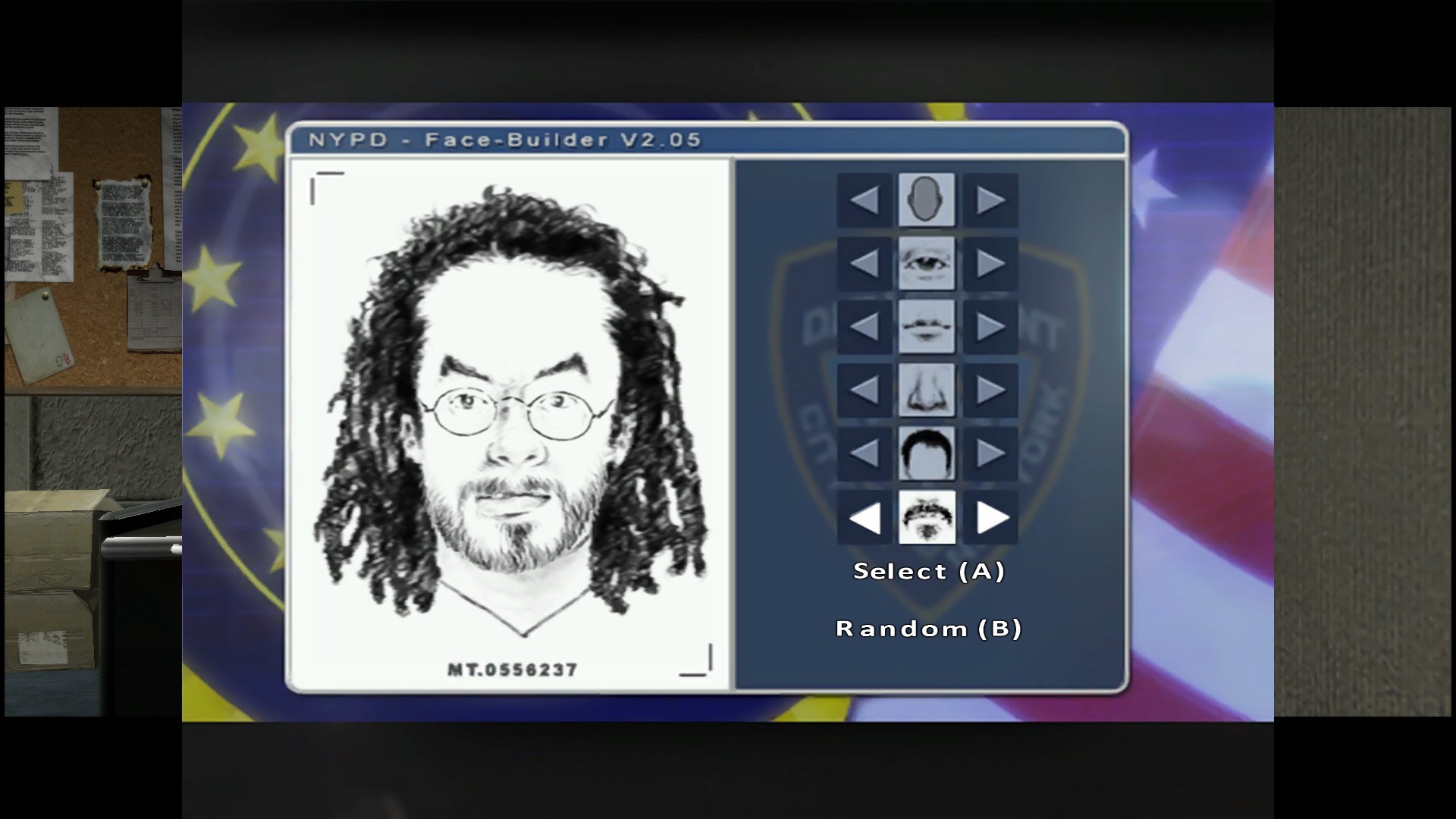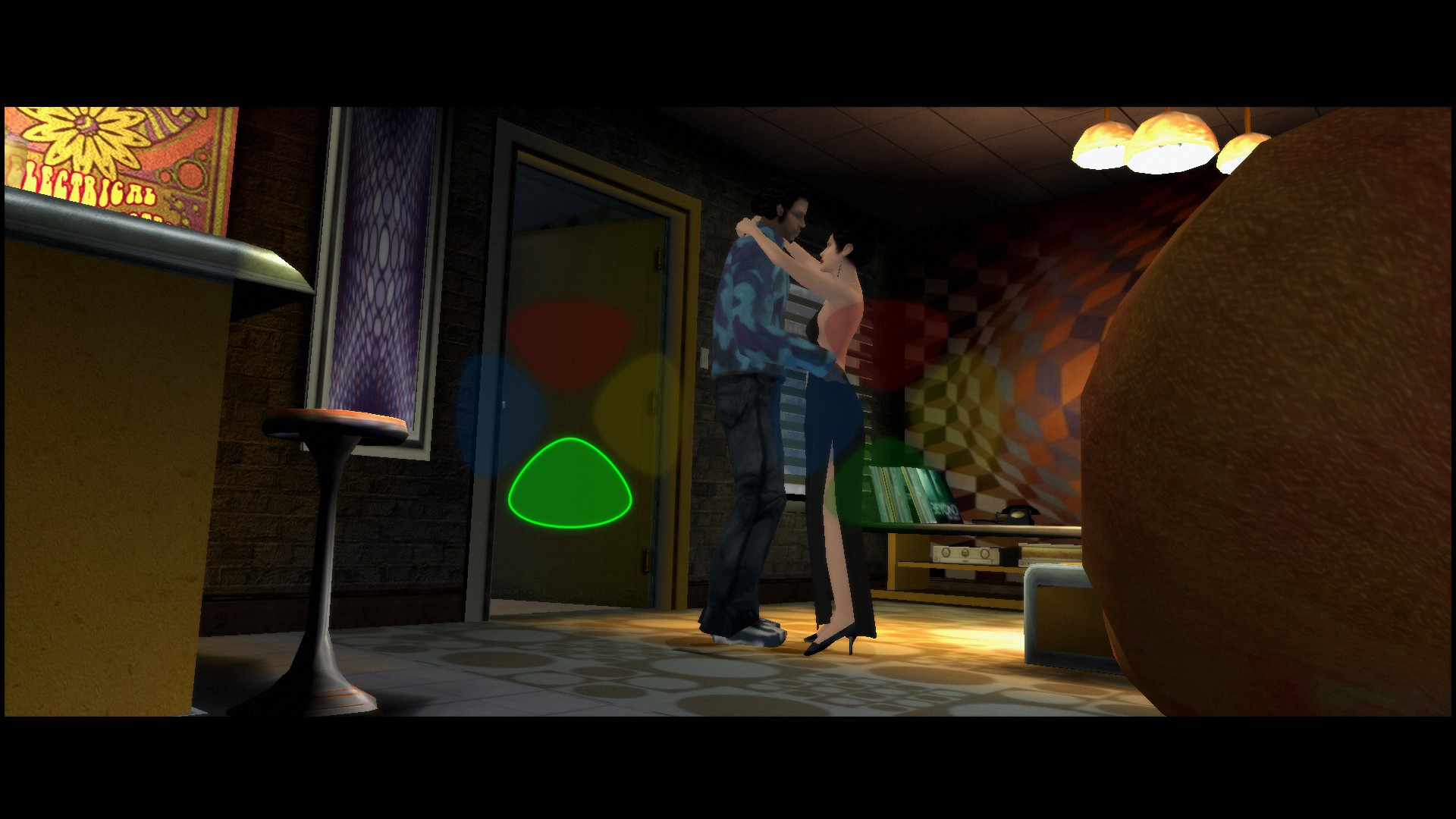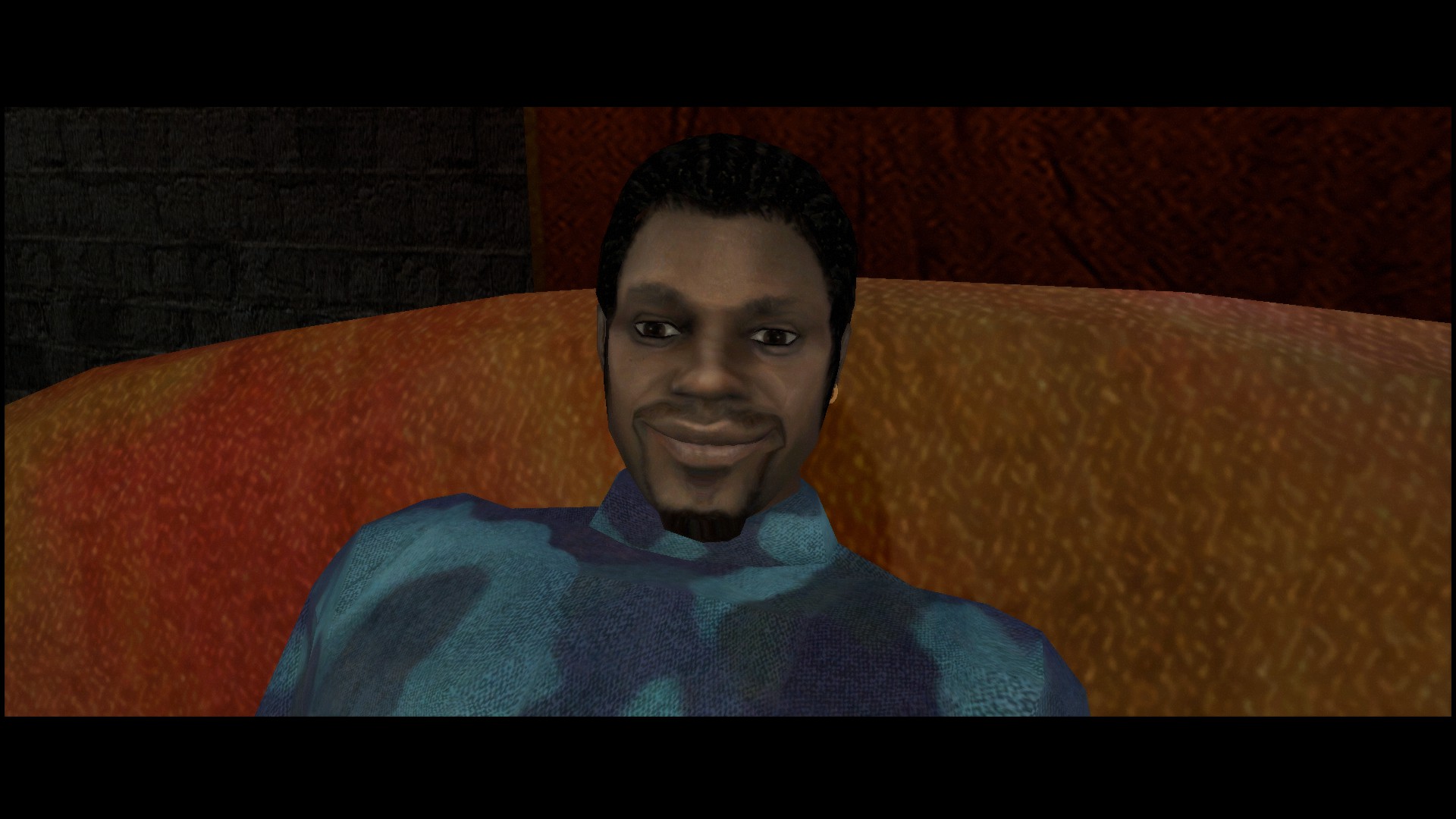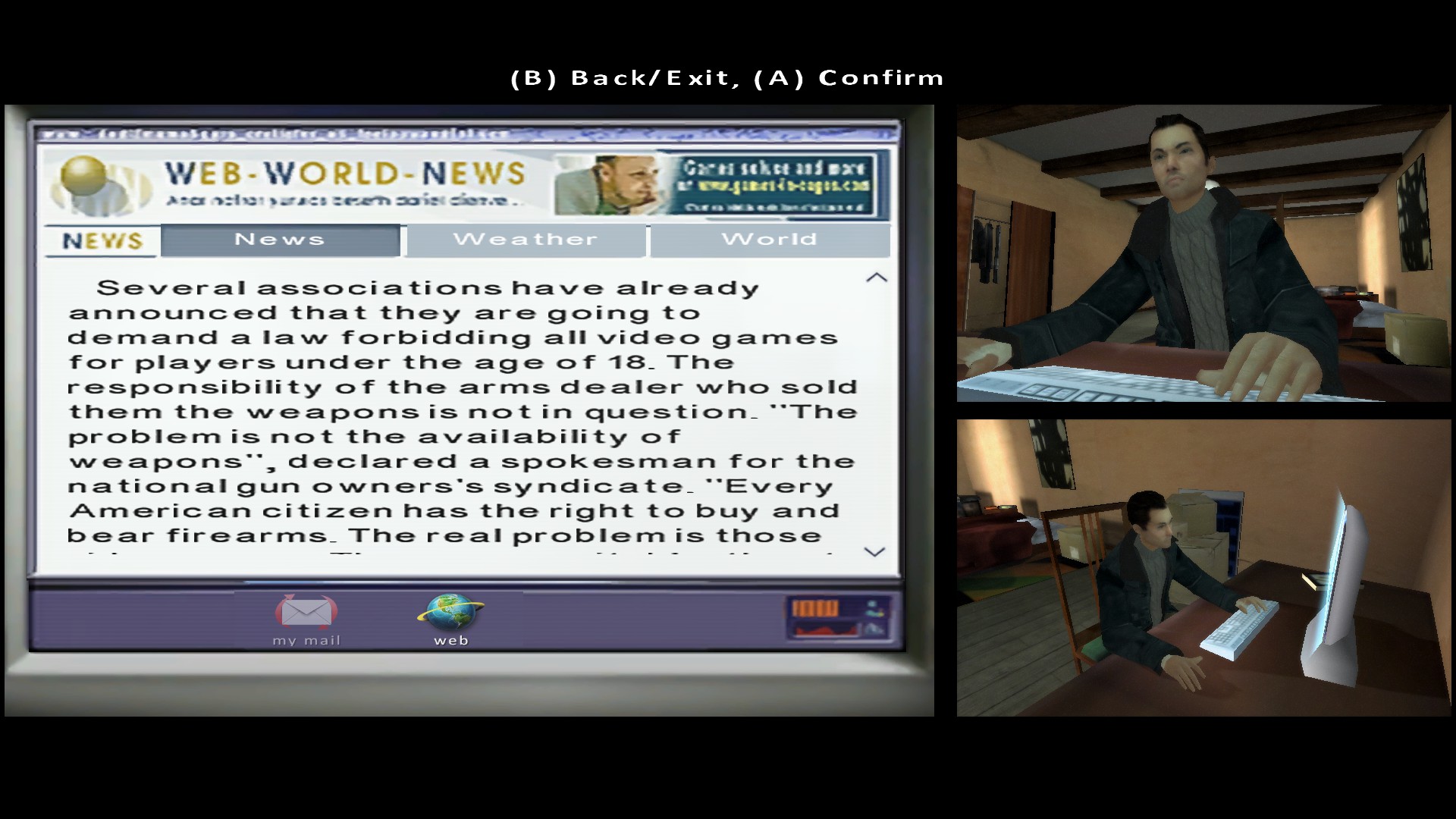
A couple of days before New Years, GameCloud Editor-in-Chief, Will Kirk and I were discussing the topic of strange games and, of course, Fahrenheit was soon mentioned. Fahrenheit, or Indigo Prophecy as it was known in some parts of the world (or Fahrenheit: Indigo Prophecy Remastered, as it’s now called), is Quantic Dream and David Cage’s terrifying baby. (Though the Remaster was developed by Aspyr Media.) I’d never played the game though I was well aware of its notoriety and status as a spiritual precursor to Heavy Rain, which I also thoroughly enjoyed for its strangeness. As it so happened, I’d picked up the remastered edition when it released not too long ago and it had sadly ended up on my pile of shame. Hearing a lot about it recently from a number of different people, Will included, I decided to give it a whirl. I… I was not prepared for this. No one truly is, I think, when they first play Fahrenheit.

No one.
Fahrenheit, much like Heavy Rain, has you take control of multiple characters throughout the game, casting you as fugitive/spiritual-whatsit Lucas Kane, and detectives Carla Valenti and Tyler Miles. The game starts you out as Lucas Kane, possessed and in the throes of a violent, sacrificial ritual of which you are an unwilling participant. After carrying out a grisly murder, you’re left as Lucas to deal with the aftermath and make an escape; control later switches to the detectives, who build a case based on what Lucas left behind. The story then follows a cat-and-mouse chase between Lucas and the detectives, with the supernatural consequences of Lucas’ involvement with the ritual unfolding around them at the same time. It is a really cool story, it’s just that about two-thirds of the way into the game, things start getting a little… “odd.” Odd even by the standards of the premise I just described up there.
The story of Fahrenheit is like an episode of CSI by way of a mad person’s fever dream, often breaking the fourth wall and using random plot devices whenever it feels necessary. If you read around the net, you’ll find that most people talk about how the game’s story is really great up to a point before just getting weird, and this is still true. Though the pacing could sometimes be a bit slow, Fahrenheit is very good at dropping just enough information at the right moments to maintain interest without giving too much away. The mystery created by the events at the beginning of the game inspired a real feeling of intrigue in me; I smashed out the playthrough in just over a day.

You’re an interesting, frightening man, David Cage.
Now, I can’t talk about exactly what happens when things go peculiar, just that by the end the narrative goes just completely off the rails. Mentioning even little parts of the story could be enough to tip you off while playing and spoil something, however, so I won’t go into details. I can say that the story uses a trope that seems tired and hugely overdone today but back in 2005 might not have seemed so hokey. The ending especially had so many little plot developments that had me saying, “But why?” Nothing that ruined the story in any way, just things that didn’t need to happen, and the story wouldn’t have been impacted without their presence.
I don’t dislike the story of Fahrenheit; it has a lot of flaws but, depending on what you want out of a game narrative, there’s enough in here to keep things interesting. What’s impressive, to me at least, is the sharp thematic turn that the game takes isn’t exactly out of the blue. If you’re paying attention to certain details for the first two-thirds of the story, the last section is full of little “Ah-hah!” moments that at least show that the crazy bullshit was planned from the start. Don’t get me wrong, the end of Fahrenheit still doesn’t make much sense and is so bizarre that I think David Cage might actually bark at toddlers, but there is some kind of method to the madness.

“Have you ever played a videogame?”
Fahrenheit’s gameplay is something familiar, these days, at least, combining elements of what would eventually become Heavy Rain’s control mechanics and a literal pair of Simon Says toys. During action sequences, two multi-coloured circles will appear on-screen with the words “Get Ready!” and you’ll need to move the control sticks to match their pattern, which translates to your character doing a thing. Said thing can range from talking to someone under pressure and keeping your cool to taking on supernatural forces and leaping about the place like physics don’t exist. Despite the occasional sequence of walking around and looking at stuff, and a couple of stealth sections, Fahrenheit’s gameplay is, by and large, one massive quick time event. On whether or not this should be considered a negative point, given the time of its release, I still feel it’s something to struggle through in order to enjoy the rest of the game.
That being said, it’s not too far off from mechanics found in the likes of Telltale’s interactive dramas. It could even be argued that Fahrenheit does it better since it demands more from you in terms of following the sequence required to be input rather precisely. Telltale games, and others like them, often come down to “mash x, then press the arrow key,” whereas Fahrenheit does try to play around with the main mechanics, on occasion, and use them in different ways. It doesn’t do it very well, but it does try. I’m also not saying that QTE’s are good, either, just that Fahrenheit did it better than more recent examples. In an otherwise enjoyable but unusual game, this is one of the few weak points.

Press X to woo, or your partner will develop a headache.
The context of its release period is essential to keep in mind because you can’t really assess Fahrenheit’s graphical appearance and visuals by today’s standards, even if it is a remastered version… But I’m still going to do exactly that. Remastered, in this case, is just a way of saying they’ve polished something that was already showing its age, not remade the game with entirely. Objects and items still look blocky and disproportioned, character models still have jerky, flailing movements whenever they speak, and the voice acting is… Well, it was 2005. You know, they try, it’s obvious that the actors are putting a lot of effort in, but there are some obvious direction issues, and their words don’t always match their characters’ expressions. For some reason, whenever a character stops speaking, their face spasms and returns to a neutral expression as though they can only emote when speaking.
While we’re on the topic of emoting, what the hell is up with Tyler’s face?

GAH!
I feel a piercing cold in my chest whenever he flashes that thing towards the screen, his eyes boring into my soul. Why does his mouth look like a bitmap texture when everyone else has proper 3D modeling that makes them look at least vaguely human? While we’re on the topic of Tyler and his stupid face shattering my suspension of disbelief, David Cage really wanted you to know that Fahrenheit was a videogame and Tyler was his mouthpiece. The game has something of a “cinematic” aesthetic to it, going so far as having Cage himself direct the tutorial as an NPC in an in-game studio. This carries on throughout the game, most noticeably in the way it breaks the screen up into multiple views of what’s happening at the time. It’s an interesting style, one that appeared a lot around the time of Fahrenheit’s initial release and in later years, and I feel like it serves the narrative well.
Every chance he gets, however, Tyler will interrupt the conversation to mention casually how he loves videogames, or to remark on how much what you’re doing at the time is like a videogame. In the office, at a crime scene, or while interviewing a witness, in Tyler’s mind, there’s no such thing as an inappropriate time. Even in places where you’d expect to find stuff like that, background flavor text and the like, Cage has found a way to make it as obnoxious as possible. Despite how annoying it is, I think this is actually my favorite part of the game. These are the moments that were meant to be tongue-in-cheek jokes, intended as nods to the audience to the fact they’re playing a game. The rest of this stuff is hands down legit, and it’s absolutely bonkers. Can you imagine what it would be like if David Cage decided to take the piss and make a game that was trying to be weird?

Yeah, ok– Yes, al– WE GET IT, DAVID.

I hadn’t considered it before now, but Telltale and others currently enjoying the episodic, narrative-driven interactive drama scene all owe a lot to Quantic Dream for their work. Games such as The Walking Dead and Life is Strange are essentially highly polished, episodic versions of games such as Fahrenheit or Heavy Rain. Fahrenheit earnestly explores things like human emotion, testing the human spirit, and the way we perceive reality. Sure, it does it in ways that are sometimes laugh out loud ridiculous, but there weren’t a whole lot of games like it at the time. It’s a bit clunky and is sadly showing its age, even after being remastered, but Fahrenheit is still an enjoyable game and an important one for the example that it set in the industry.











